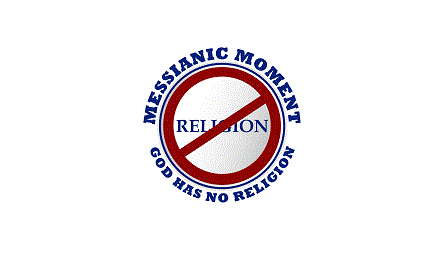The plagues continue, with locusts, darkness and the final plague, the death of the firstborn of Egypt.
Moses is instructed by God what the Israelites must do to be protected from the angel of death, for even though Goshen had been protected from the other plagues, it seems that the angel of death was over everyone and everything, and only the blood of the Passover Lamb would protect you from death. They are also told to sacrifice the lamb, and to make sure that the sacrifice is eaten in the prescribed manner, with nothing left over, and only those who are Israelites, or slaves and sojourners with Israel who have been circumcised may eat of this meal.
After the death of all the firstborn, both men and animals, Pharaoh lets the people go. They plunder the Egyptians, who give willingly, and leave the very next day. Moses reminds the people of the Passover regulations, commanding them to teach this story throughout all their generations and to eat the Passover meal (Seder) every year according to the way it should be done, with no leavened products for a week.
The term “The Passover Lamb” is first introduced to us in this parashah. To the Jewish people, the Passover Lamb represents freedom from slavery to Egypt, and is a very important part of our history. Because the Temple no longer exists, and the Torah specifies that the Passover Lamb had to be sacrificed at the Temple, we do not eat lamb at Passover; the usual dish chosen is chicken.
I have this great recipe for baked chicken: grease a pan, place the cleaned chicken pieces in the pan and spread butter over them. Sprinkle on salt, pepper, garlic powder and fresh parsley flakes. Bake at 375 for 45-60 minutes, or until the skin is browned and bubbling. YUM!!
The Passover Lamb means freedom from slavery to Jews, and to Christians it is a reference to Yeshua, who sacrificed Himself to free us from a different form of slavery: slavery to sin.
Now here is the interesting part: the Passover sacrifice was not a sin sacrifice- it was a thanksgiving sacrifice. There are 5 types of sacrifices:
- Whole Burnt Offering
- Meal Offering
- Peace Offering
- Sin Offering
- Guilt/Trespass Offering
The first three offerings are voluntary, and the last two are mandatory for atonement from sin. The main difference is that of all 5 sacrifices, the only one where both God and the person sacrificing shared of the meat was for the Peace, or Thanksgiving sacrifice. This was representative of the communion between man and God.
Yeshua’s sacrifice was clearly one made for the atonement of sin- it was most representative of the wholly burnt sacrifice, since His entire body was given to God. But wait! If the sacrifice Yeshua (Jesus) made was a sin sacrifice, why is He called the Passover Lamb? The Passover Lamb sacrifice was a peace offering, a Thanksgiving sacrifice, and not a sacrifice to atone from sin. So, then, is calling Yeshua the Passover Lamb really accurate?
Not from a human timeline, but since God is not subject to any timeline, we need to look at another specific sacrifice to find the complete relationship opportunity that Yeshua’s sacrifice made possible. That sacrifice is described to us in Leviticus 16- it is the Yom Kippur sacrifice. We are told to have 2 goats (not lambs)- one to be sacrificed and one to be released into the desert after the people have placed upon it’s head their sins. The goat that was chosen by lot to be sacrificed had it’s blood used to atone the alter and the Most Holy Place, and the rest of it was a burnt sacrifice. I checked the Chumash and did not see specifically where it mentioned if any portion of the Yom Kippur lamb was to be given to the Priests, but since God says that we are all to afflict our souls ( fast), clearly this had to be a wholly burnt sacrifice, with no parts being eaten by the Priests.
As we can see, Yeshua’s sacrifice was more like the Yom Kippur goat, not the Passover Lamb, so which is it? Did Yeshua’s sacrifice cleanse us of our sins, or bring us into communion with God?
The answer is: it has done both of these things at one time.
The way I see this working is that Yeshua took on our sins, as the Yom Kippur goat does, and freed us from sin when He sacrificed Himself on Passover. The Passover Lamb sacrifice was a Thanksgiving, or Peace offering which allowed us to commune with God. But, communion with God is not possible when we are covered in sin, so first we must have the sin removed. Only after we have been cleansed of our sins can we have complete communion with God and come into His presence. Under the Sacrificial System one had to perform two, separate sacrifices to attain this state of communion, but with Yeshua’s sacrifice both were accomplished, at once.
Yeshua is the Passover Lamb, which was a lamb chosen by man whose blood would protect them from death, and He is also the the Lamb of God, the Yom Kippur lamb chosen by God (through throwing lots) to atone for the sins of the people. He is both of these: God chose Yeshua to atone for the sins of the people, and when you choose Yeshua as your Passover Lamb, then you have both atonement of your sins and protection from death (not the first death, of course, but the second death, which is for all eternity.)
PS: Next week Donna and I will be on our annual anniversary cruise so I will not be blogging. Have a great week, and I will be back on February 13.
